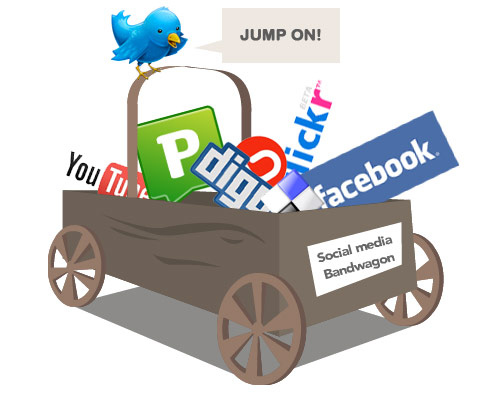
In the last few years the rise of social media has influenced the lives of many people. People are finding their jobs through communities. Old classmates are arranging reunions by connecting on social networks and interacting with other people has reached a whole new level by the use of MSN, Facebook and Twitter. In short; everybody is interacting through thousands of social networks.
The creative industry we are exploring is television. This industry is trying to get involved in social media, as they have noticed the popularity amongst millions of people all over the world. Social media has two effects according to Benkler. The first effect is that social networks has helped to reshape and improve our relationships with family and friends. Second, there are new kinds of relationships for different goals because of social networks (Benkler, 2006). Those two effects can help to benefit the ‘old’ medium television. In fact, broadcasters are already trying to do this. Many programs have their own hyves or twitter account. The problem with this integration is that it is not really enriching the programs. It only adds a new, but still very fragile way of communicating with the producers of television. As the CEO of Microsoft was once complaining (Ballmer in Sandoval, 2008):
My son will stay up all night basically playing Xbox Live with friends that are in various parts of the world," Ballmer told The Washington Post. "And yet I can't sit there in front of the TV and have the same kind of a social interaction around my favorite basketball game or golf match.
This example shows the impact of social media on the creative industry of BNN television. The features of social media are developing very fast, however unfortunately they are developing on their own. They are not automatically integrated into for example television, which means that it is not yet enriching the television programms as we want to.
Taking a closer look at BNN, which is our case study, we can conclude the following:
BNN Internet for example, wants to inform, guide, stimulate, amuse, entertain and sometimes even confront. These are keywords BNN uses to explain how they are interactive with their audiences through the internet. For example BNN offers its audiences the feature of weblogs, so that people can describe their own lifes and share with BNN members. By using social media and integrate it to the television programms, BNN wants to build a bridge between different generations. This is where we see again that BNN is already familiar with social media and now it is time to integrate it into the television programms, in order to enrich them. (BNN website, 2009)
Benkler, Y. (2006). The Wealth of networks. How social production transform markets and freedom. www.benkler.org: Yale University Press.
BNN Merkboek voor de pers. (2009). Opgeroepen op December 2, 2009, van http://pers2.bnn.nl/data/media/db_download/342.pdf
BNN volgens het boekje. Algemene info BNN. (2009). Opgeroepen op December 2, 2009, van BNN: http://www.bnn.nl/page/overbnn/algemene%20info/
BNN volgens het boekje. BNN Merkboek. (2009). Opgeroepen op December 2, 2009, van BNN: http://www.bnn.nl/page/overbnn/bnn%20merkboek
Turning the TV into a 'social media'. (2008, June 11). Opgeroepen op December 1, 2009, van http://news.cnet.com: http://news.cnet.com/8301-10784_3-9965864-7.html





What a biased rating possibilities, very funny: grappig, interessant, te gek (perhaps you should rephrase them in English as well ;-))
ReplyDeleteCompliments for the article, just wondering whether BNN is already integrating social media in television programs or that they use social media to communicate with viewers.
ReplyDelete